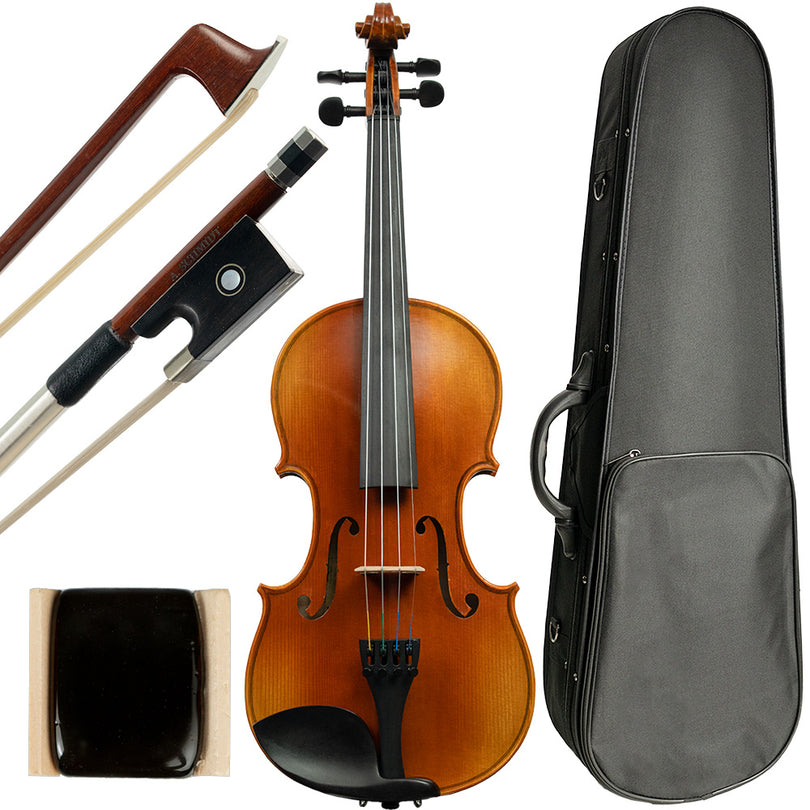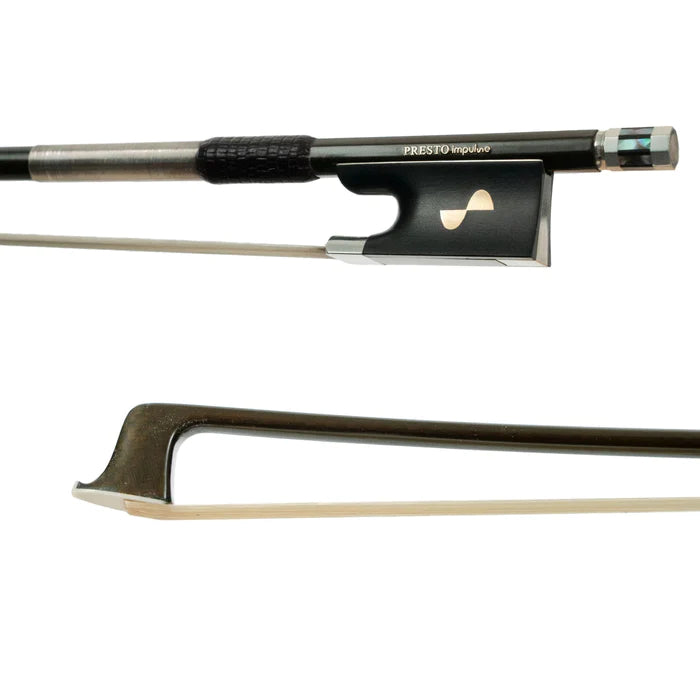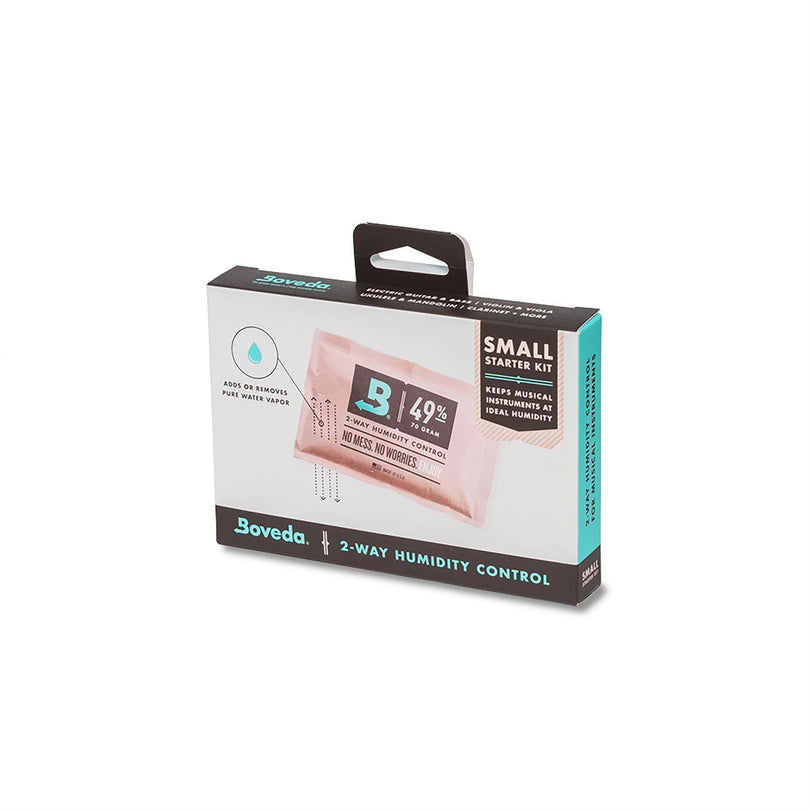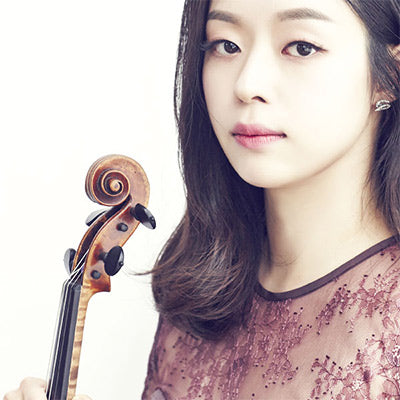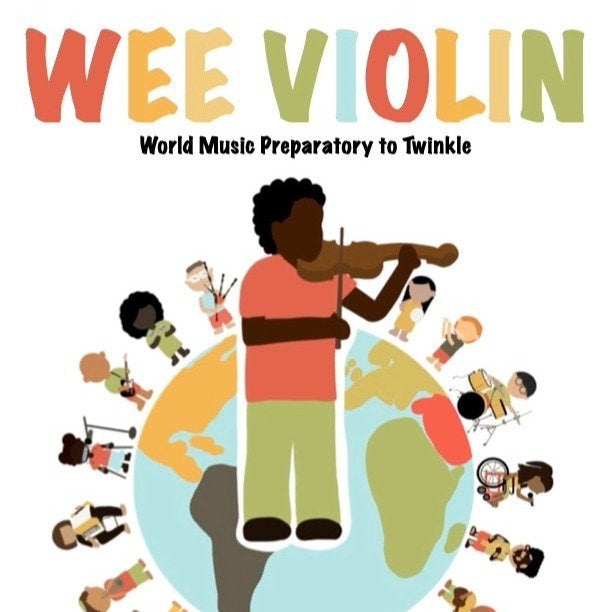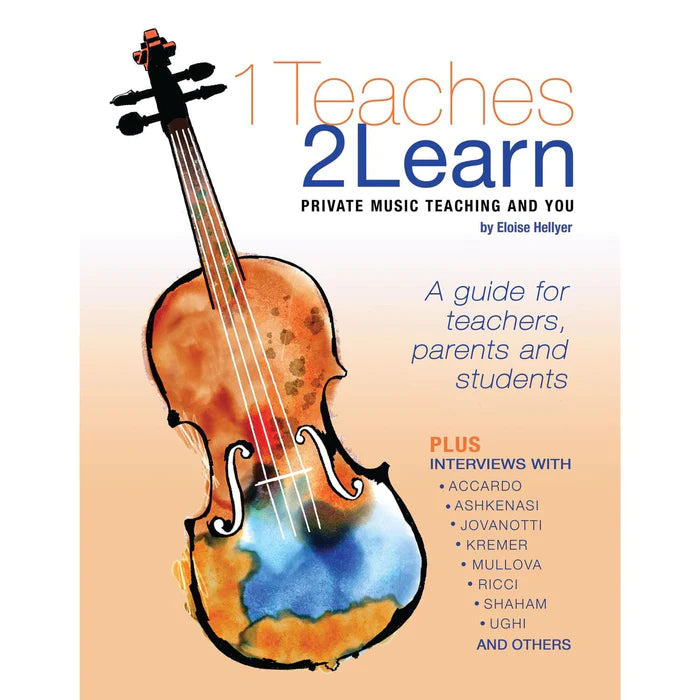Apprentice Difficulty Rating Scale
The Shar Music Apprentice rating system was developed by our dedicated apprentices. Each rating beings with an "A" to eliminate confusion with the ASTA syllabus numbers. The Apprentice numbers roughly coincide with ASTA difficulty levels and share similar technical characteristics with ASTA rated pieces in the same level, but these are not actual ASTA ratings.
For the Violin and Viola Sheet Music, the ratings are:
A1 Music suitable for a beginner, designed to develop coordination of the hands and clear intonation. Music uses simple bowings with short (2-4 note) slurs, and remains in first position with few accidentals or altered fingerings. Repertoire corresponds to Suzuki Violin School books 1 and 2, or Barbara Barber's Solos for Young Violinists Book 1. Viola repertoire corresponds to Suzuki Viola School books 1 and 2, or I Can Read Music Vols 1 or 2 by Joanne Martin.A2 Slightly more advanced, requires full use of first position, some third position but no rapid shifting, more complex slurs and rhythms, including slurred string crossings, more use of dynamics and articulation. Violin repertoire corresponds to Suzuki Violin School book 3, Wohlfahrt 60 Studies, Op. 45, or Seitz Concerto No. 2 in G, Op. 13 and Concerto No. 5 in D, Op. 22. Viola repertoire corresponds to Suzuki Viola School Book 3, G. F. Handel Preludium in G, and Old Masters for Young Players.
A3 Music requires more extensive use of the lower positions, some use of higher positions (up to fifth), faster, more demanding string crossings, simple double stops and chords, phrase shaping and vibrato development, more varied bow strokes and control of dynamics in both long and short strokes. Repertoire corresponds to Suzuki Violin School books 4 and 5, the more difficult Sietz Concertos (nos. 1, 3, 4, and 5), or Dvorák's Humoresque. Viola repertoire corresponds to Suzuki Viola School books 4 and 5, Flesch Basic Studies, GF Handel Concerto No. 2 in B flat, or Whistler Concert and Contest Collection.
A4 Requires full use of lower and middle positions, includes more double stops and chords, some use of positions above fifth, advanced bow techniques, more demanding phrases and musical interpretation. Repertoire corresponds to Bartok Romanian Folk Dances, Suzuki Violin School books 6, 7, and 8, or Massenet Meditation from Thaïs. Viola repertoire corresponds to Galamian Scale System for viola, Sevcik School of Technique Op. 1, Bach Concerto No. 1 in D, or Brahms Hungarian Dance no. 2.
A5 Left hand should be developed for extended passages in double stops, large leaps, and octaves, requires use of all positions including high ranges, complex bowings used for special effects, control of rapid string crossings and large amounts of dynamic contrast. Repertoire corresponds to Rode 24 Caprices, Dont Etudes and Caprices, Op. 35, Bruch Concerto No. 1 in G minor, or Dvorák Romance in f, Op. 11. Viola repertoire corresponds to Rode 24 Caprices, Bach Cello Suites 4 and 5, Brahms Sonatas Op. 120, or Mozart Violin Concerto No. 3 in G for Viola.
A6 Most difficult music, requires extensive competency in technique to execute, maturity of musicianship to interpret. Repertoire is vast, corresponding to Paganini 24 Caprices, Ysaÿe Six Sonatas Op. 27, most major violin concertos. Viola repertoire corresponds to Eckart Pro Music Nova, Hindemith Sonatas Op. 11, 25, and 31 and Der Schwanendreher; most major concertos.
For the Cello Sheet Music, the ratings are:
A1 Music suitable for a beginner or near beginner, designed to develop coordination of the hands and clear intonation. Music uses the keys of C, D, A, B flat major, infrequent use of extensions and basic shifting exercises, some slurs. Repertoire roughly corresponds to Suzuki Cello School Books 1 and 2.A2 Slightly more advanced (appropriate for most second year students), uses second and third position but no rapid shifts (exercises may introduce fourth and fifth positions as well), more complex slurs and rhythms, including slurred string crossings, more use of dynamics and articulation. Extensions used frequently in first position. Repertoire corresponds to Suzuki Cello School Book 2 and 3, Alwin Schroeder's 170 Foundation Studies, Vol. 1, W. H. Squire's Fairy Tales (Op. 16) and Breval's Sonata in C.
A3 Music appropriate for an advancing beginner or an intermediate player. Tenor clef is introduced and upper positions are used extensively. Techniques like double stops and chords, phrase shaping and vibrato development, more varied bow strokes and control of dynamics in both long and short strokes are also used. Repertoire corresponds to Suzuki Cello School Books 4 and 5, Alwin Schroeder's 170 Foundation Studies, Vol. 1 and 2, Goltermann's Concerto No.4 (Op. 65) and No. 5 (Op.76), W. H. Squire's Tarantella and Danse Rustique.
A4 Music requires use of thumb position (primarily with the thumb over the center harmonic), includes more double stops and chords, advanced bow techniques, more demanding phrases and musical interpretation. Repertoire corresponds to Popper's Op. 76 (Preparatory to High School), Fauré's Elegie Op. 24, Saint-Saëns' Allegro Appassionato, Op. 43.
A5 Music requires that the left hand is developed for extended passages in double stops, thumb position, large leaps, and octaves, requires use of all positions including high ranges, complex bowings used for special effects, control of rapid string crossings and extreme dynamic contrast. Repertoire corresponds to Popper's High School of Cello Playing, Boccerini Concerto in B-flat, Saint-Saëns' Concerto No. 1 in a minor, Op. 33.
A6 Difficult music that requires extensive competency in technique to execute, maturity of musicianship to interpret. Repertoire includes F.J. Haydn's Concerto in D, Op. 101, Schumann's Concerto in a, Op. 129, Dvorák's Concerto in B minor, Op. 104.
American String Teachers Association (ASTA) Difficulty Rating Scale
Please note that the following grade descriptions are general descriptions of what is noted in the ASTA String Syllabus, which provides complete technical descriptions for each grade along with an extensive list of evaluated titles.
Violin and Viola:
1 Remains primarily in first position, with few alterations of finger placement. Bowings include detached strokes and short slurs. Rhythmic patterns are simple.2 Employs full use of first position without rapid changes in finger placement. May contain some passages in third position. Includes more varied rhythmic patterns.
3 Builds fluency with the first three positions, occasionally up to fifth position. Requires greater skill in string crossing and bow strokes.
4 Employs full use of the first five positions with double-stops and chords appearing more frequently. Passages may include spiccato, sautille, and staccato bowings.
5 Employs the higher positions on all four strings. Large leaps and extended passages in double-stops are also used. Requires advanced bowing techniques.
6 Requires all essential techniques have been mastered.
Cello:
1 Remains exclusively in first position, most often in the keys of D, G, or C. Rhythms are simple with meters in 4/4, 3/4, or 2/4.2 Increased use of the first through fourth positions. Increased difficulty in rhythms and bowings.
3 Builds fluency with the tenor clef and expands range to seventh position. Bowing styles include lengthier slurring, staccato, and spiccato. May use double-stops.
4 Continues the use of thumb position and the treble clef. Contains advanced bow strokes such as sautille.
5 Employs all positions, double-stops, and varieties of bowings.
6 Requires extremely advanced technique to interpret and perform repertoire.
Double Bass:
1 Remains primarily in half and first position. Bowing techniques include detached and staccato strokes and short slurs.2 Explores through third position as well as some higher positions. Rhythmic patterns include irregular grouping.
3 Explores third and higher positions, including thumb position. Employs more advanced bowing techniques.
4 Includes the use of the first seven positions and some thumb position in tenor and treble clef. May use advanced bowing techniques such as spiccato, ricochet, and broken chords.
5 Makes use of all positions, including thumb position. Requires wide variety of bowing techniques.
6 Requires all essential techniques have been mastered.
Ensemble:
1/2 Requires simple, basic techniques. Most use only first position and are in easy keys.3/4 Requires simple shifting and/or more complex keys, rhythms, articulations, and forms. More emphasis is placed on ensemble techniques and bow development.
5/6 Requires multiple positions, all keys, modulations, and perhaps more than one clef. Complex rhythms and meter relationships are commonplace.

